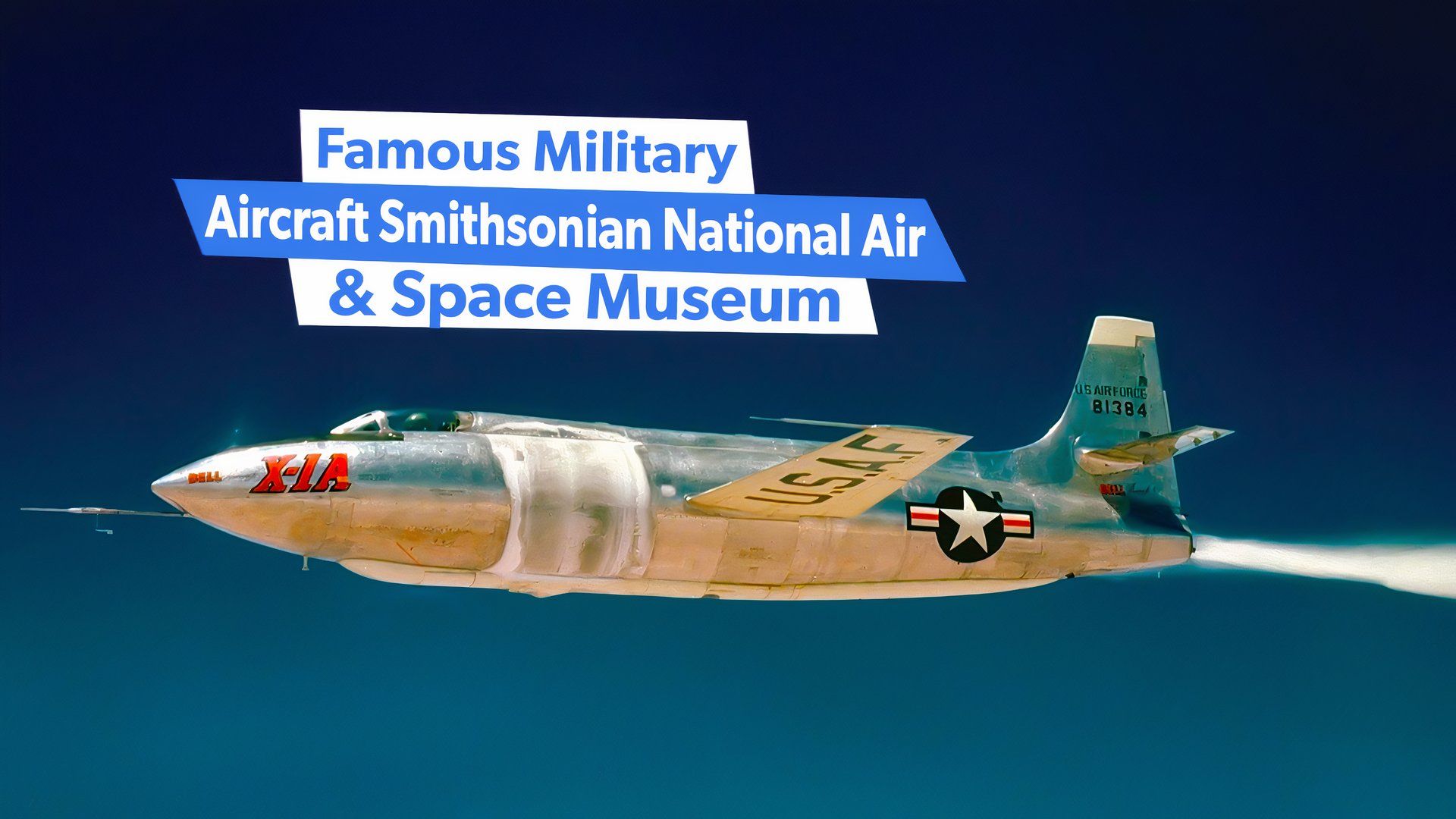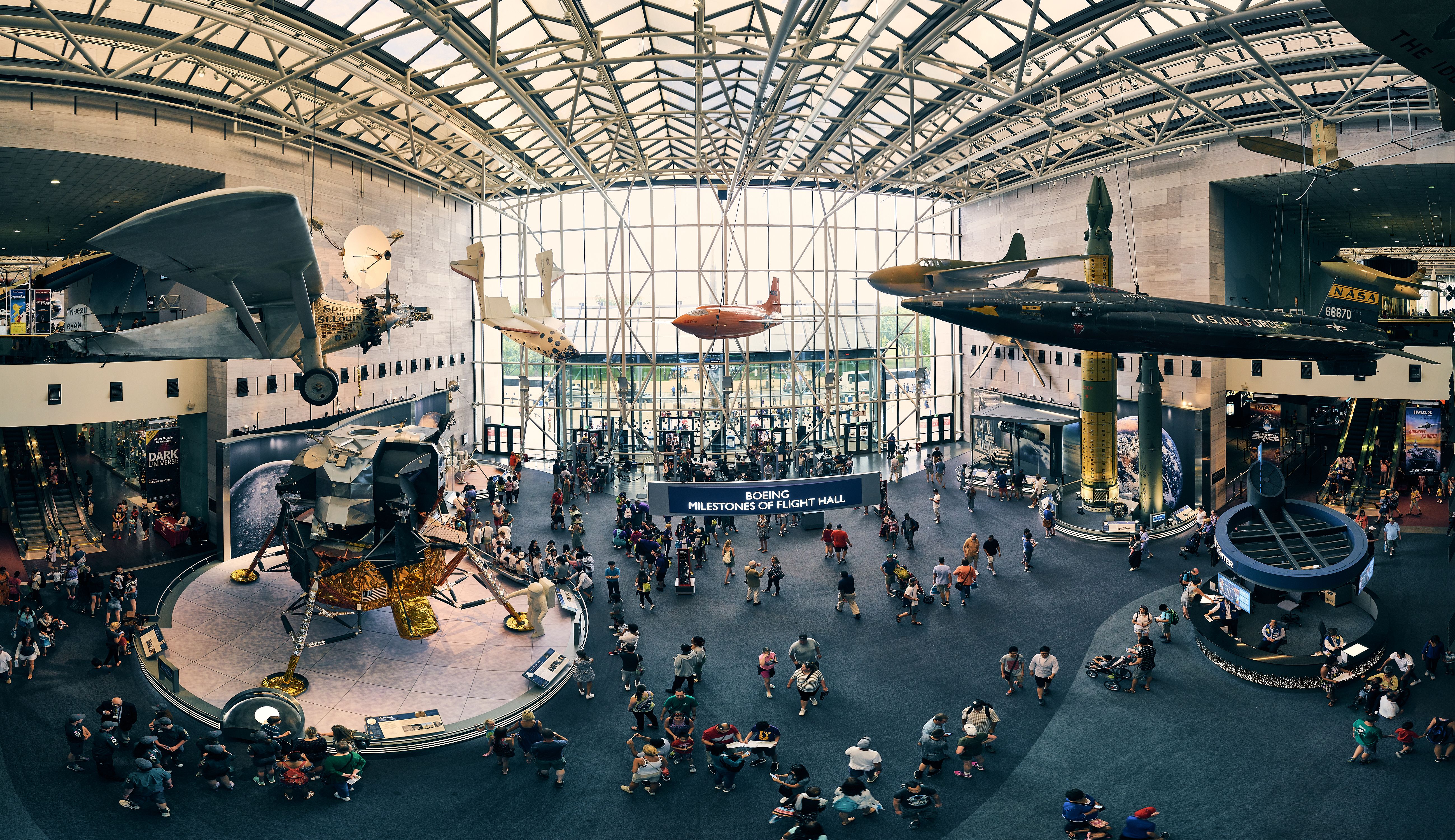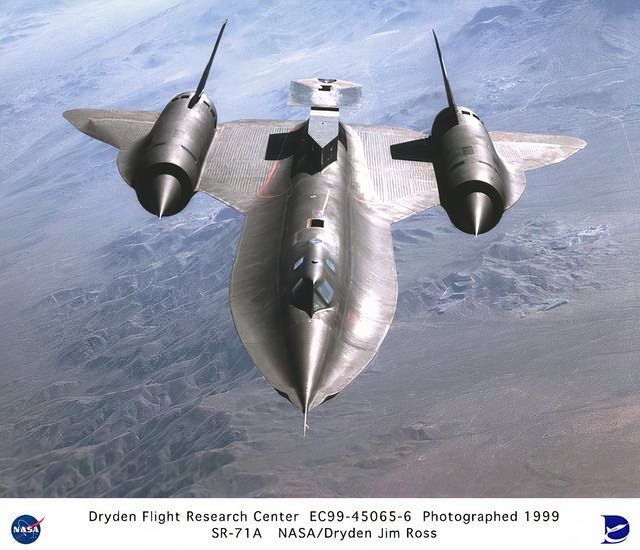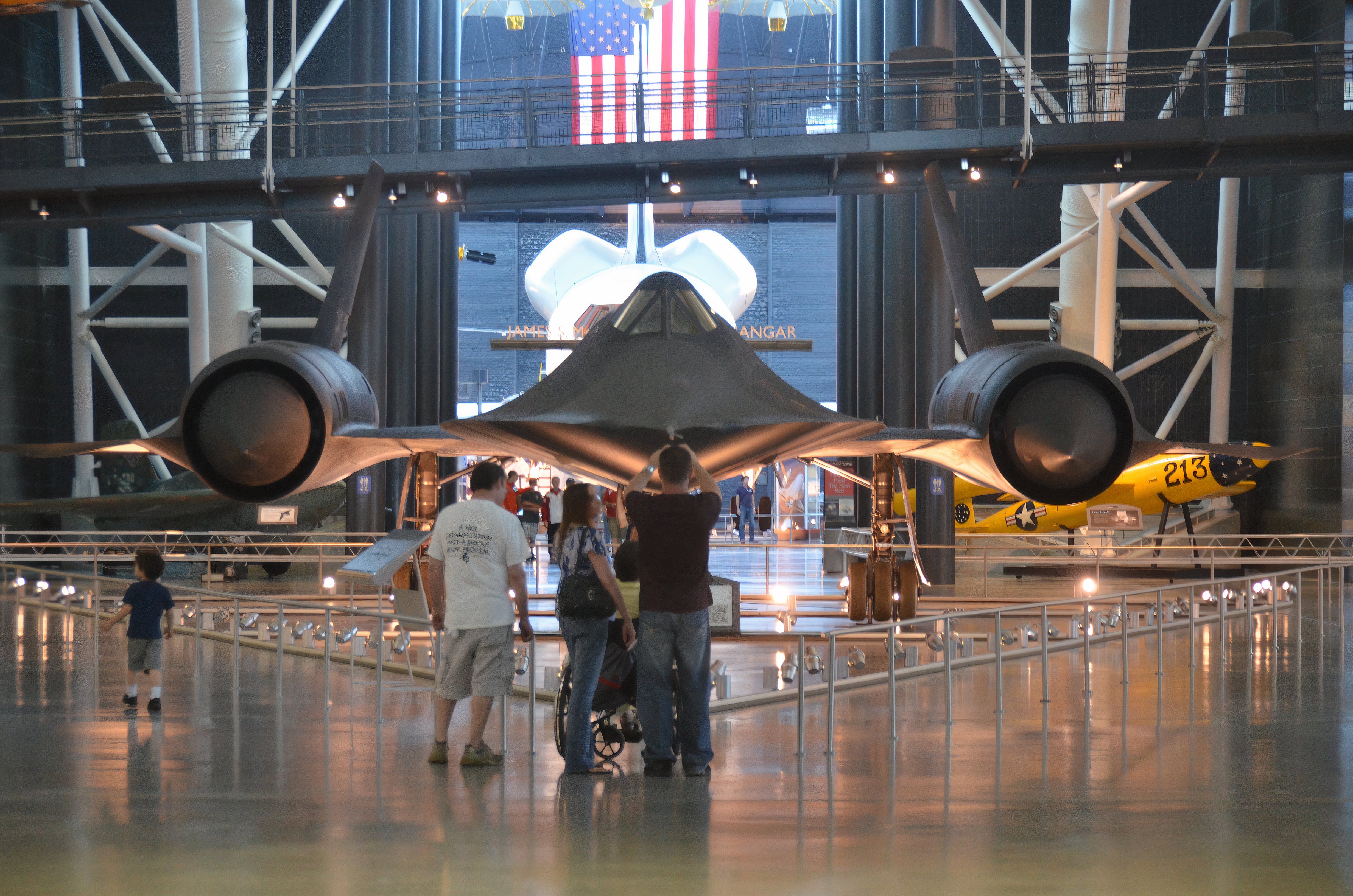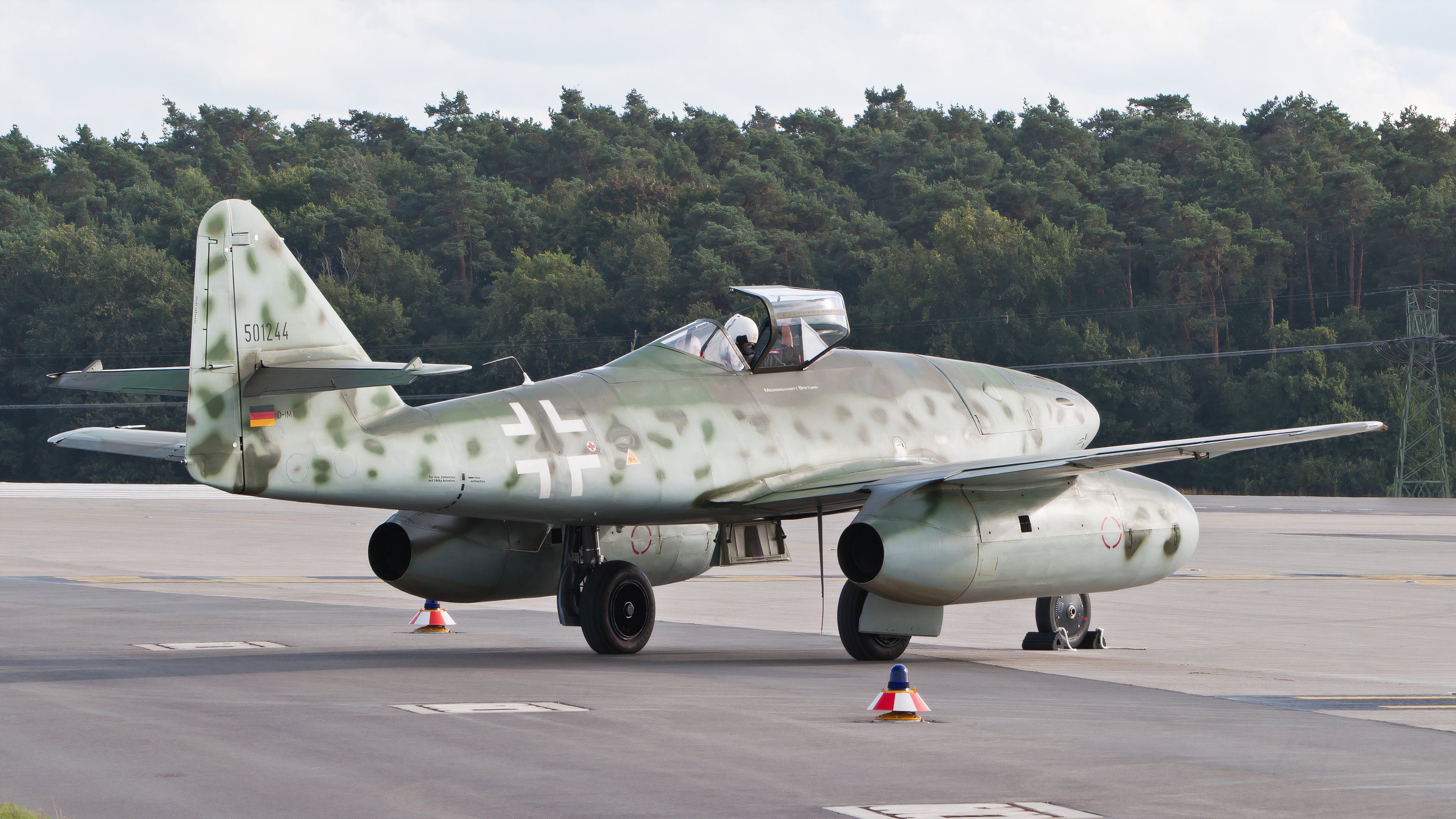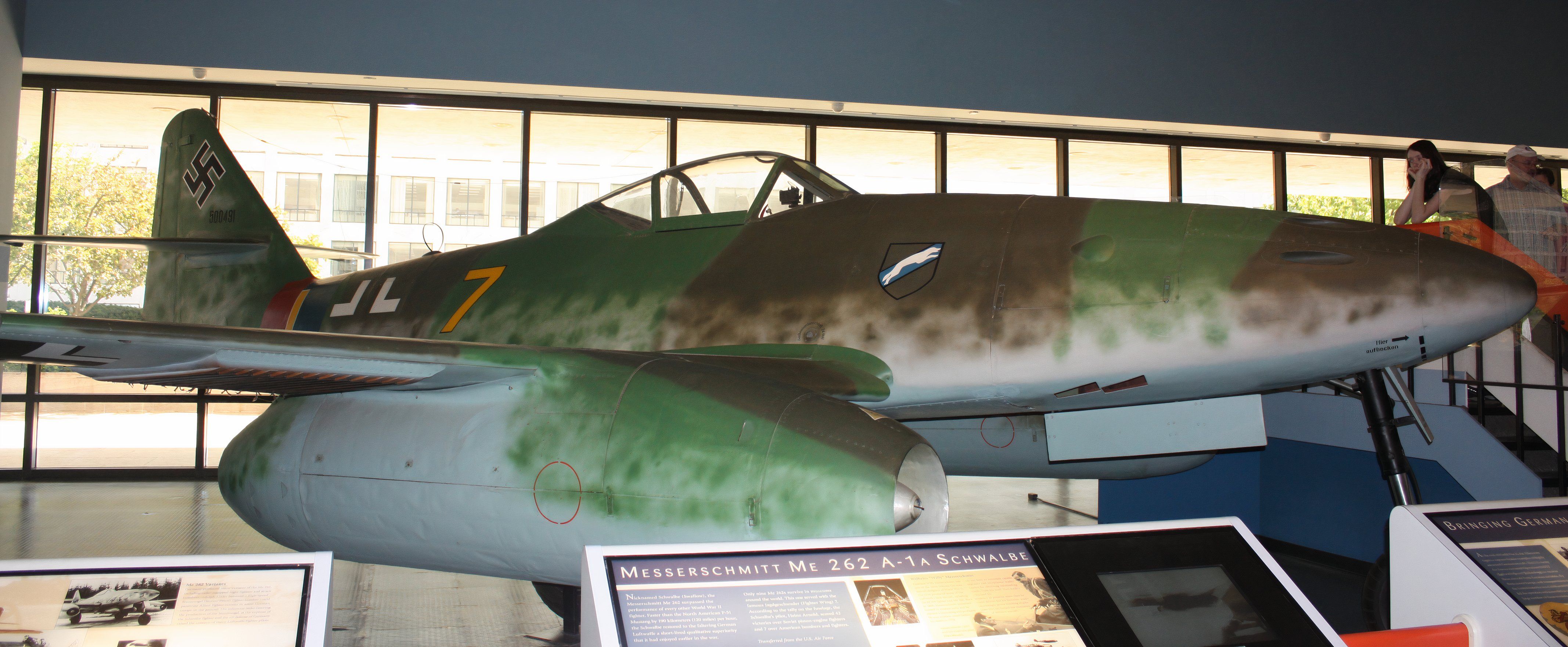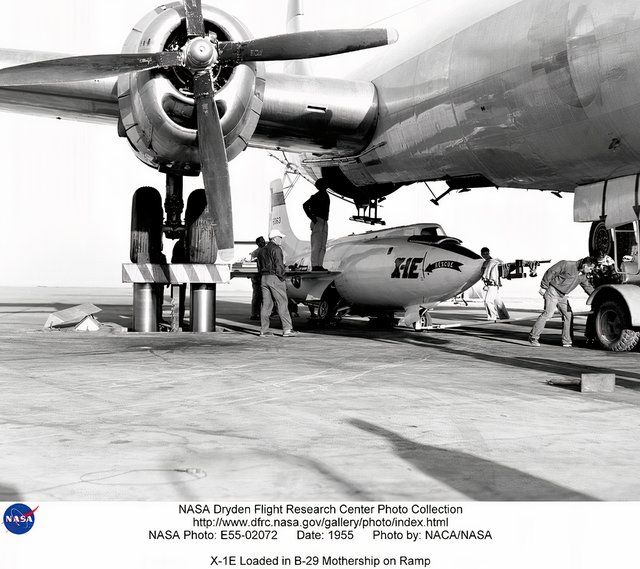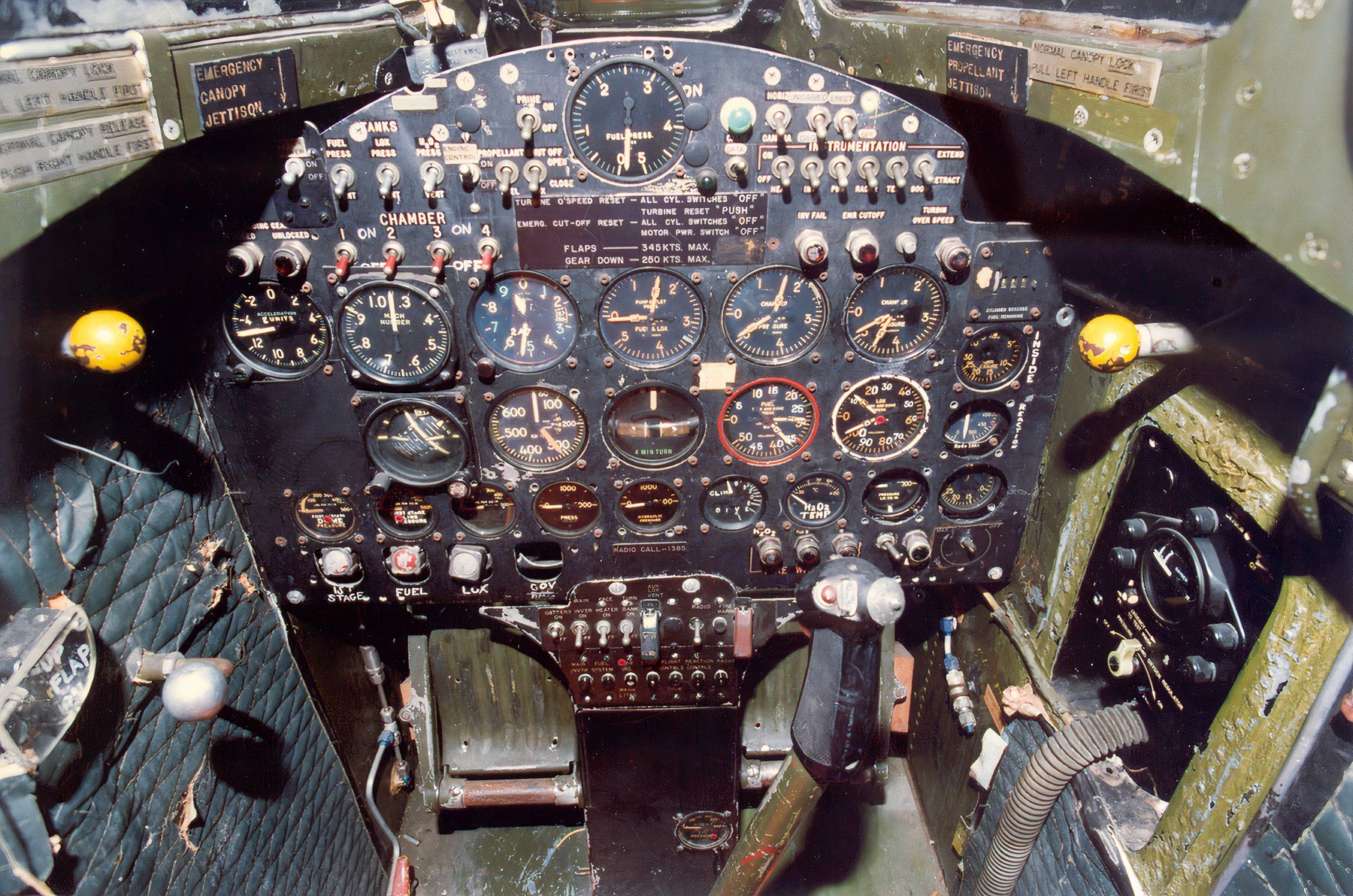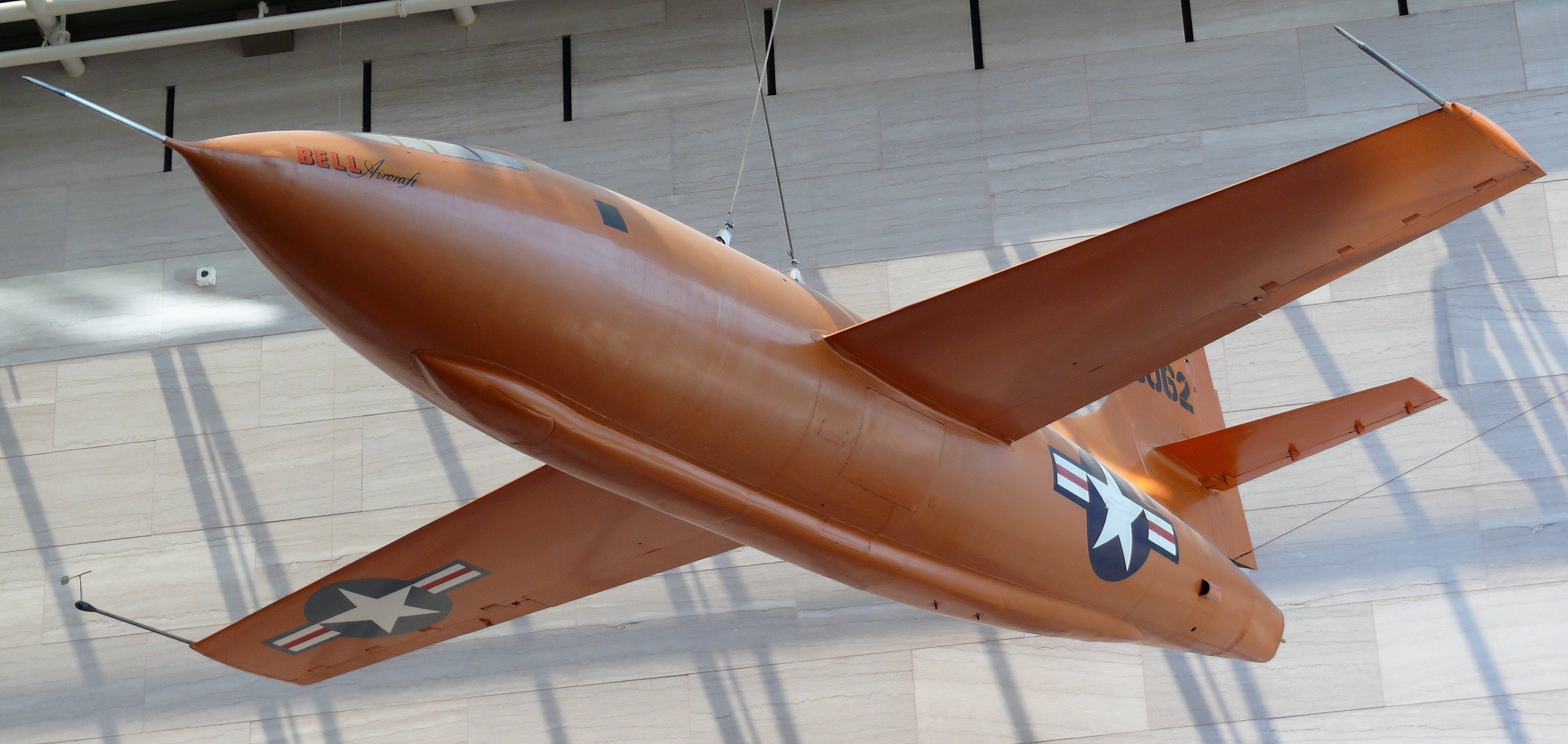The National Air and Space Museum of the Smithsonian Institution, one of the nation’s largest museums, attracts over eight million visitors annually. It houses over 78,000 objects and over 12,000 flight history, science, and technology documents. The Museum also houses the most historic collection of aviation and space images, including 1.75 million photographs and 14,000 film and video titles.
The Washington, DC, Museum features 21 exhibition galleries and hundreds of artifacts. The National Air and Space Museum opens regularly from 10:00 am until 05:30 pm. It is located on Jefferson Drive between Fourth and Seventh Streets, accessible via Metro or Bus. The Steven F. Udvar-Hazy Center, the second facility, is located in Fairfax County, Virginia.
Photo: Google Maps
The Museum showcases aviation and space exploration achievements, including the Wright Flyer, Spirit of St. Louis, Apollo 11 Command Module Columbia, Neil Armstrong’s spacesuit, and Boeing Milestones of Flight Hall. The IMAX Theater, Observatory, and educational programs are fantastic information activities.
Simple Flying selected four aircraft types to show at the Museum’s two facilities from a list of tens of aircraft. The four airplanes are historical icons in the US aerospace industry.
The fastest Blackbird
The Lockheed SR-71, the fastest aircraft propelled by air-breathing engines, acquired the nickname Blackbird or Habu. During the Cold War, it was designed to operate in hostile airspace and avoid interceptors and missiles. The first SR-71 flew on December 22, 1964, to replace the CIA’s Oxcart A-12 with more USAF capabilities. SR-71A’s final flight took off on October 9, 1999, and was recorded as 61-7980/NASA 844.
Photo: NASA | Defense Visual Information Distribution Service
The Blackbird was designed to fly deep into hostile territory, avoid interception, and operate safely at a maximum speed of Mach 3.3 at an altitude more than 16 miles above the ground. Its two Pratt & Whitney
J-58 engines were designed to operate continuously in the afterburner, achieving its best “gas mileage” during the Mach 3+ cruise.
|
Feature |
Blackbird Specification |
|---|---|
|
Airframe Material |
Titanium and other exotic alloys |
|
Length |
107.4 feet (32.73 meters) |
|
Wingspan |
55.6 feet (16.94 meters) |
|
Height |
18.5 feet (5.63 meters) |
|
Control Surfaces |
All-moving vertical tail fins, elevons |
After the Air Force began operating SR-71, it acquired the nickname Blackbird or Habu. It was formulated to absorb radar signals, radiate some of the tremendous airframe heat generated by air friction, and camouflage the aircraft against the dark sky at high altitudes. The aircraft is displayed in the Boeing Aviation Hangar at the Steven F. Udvar-Hazy Center, the Smithsonian National Air and Space Museum’s annex.
The German Stormbird
The Messerschmitt
Me 262
‘Schwalbe’ (“Swallow”) is unquestionably one of the most significant aircraft of the German aerospace industry. It was powered by a Junkers Jumo 210G piston engine with around 700 horsepower. Messerschmitt designed its Me 262 jet fighter as a bomber interceptor with powerful armament capabilities. It is rather on loan or in museum storage.
During the war, the Germans developed two jet engines: the BMW 003 and the Jumo 004.
In 1939, the
Messerschmitt A.G.
built the Me 109, which achieved a world speed record of 481 miles (775 km/h). The company developed many military designs, including the Me 110, a two-seater bomber and night fighter; the Me 163, Germany’s first operational rocket-propelled aircraft; and the Me 262, Germany’s first operational jet-propelled aircraft.
|
Feature |
Specification |
|---|---|
|
Design Materials |
Aluminum |
|
Length |
39 ft 9 in (12.1 m) |
|
Height |
12 ft 7 in (3.8 m) |
|
Wingspan |
40 ft 11 in (12.5 m) |
The Me 262 could carry two SC500 1,102 lb (500 kg) bombs kept with Mk 108 guns. Messerschmitt also created a reconnaissance variant with two RB20/30 cameras. The armament was finished with 24 R4M rockets installed on wooden racks beneath the wings. The R4M was a tiny rocket-propelled weapon used almost exclusively on the Me 262.
The electronic warfare badger
The Grumman
EA-6B Prowler, developed in 1966, was the first US military aircraft designed for tactical electronic warfare. It jammed enemy radar and communications while escorting aircraft on strike and bombing missions. Originating from the Marine Corps, the aircraft was heavier and bulkier than previous equipment, requiring specialized operators. It is on display in the Modern Military Aviation section.
In 1965, the Navy sought a tactical jammer for a full-scale nuclear war with the Soviet Union. They asked Grumman to design an improved Electric Intruder to replace aging electronic Skywarriors. The Navy required a complete redesign of the A-6 airframe, incorporating a four-person crew to jam enemy voice communications and radar signals.
The EA-6B Prowler cockpit is a large four-seated aircraft featuring a longer forward fuselage and an antenna fairing. The Prowler first flew in mid-68 and entered service aboard aircraft carriers in July 1971. Three prototype EA-6Bs were modified from A-6As, while five EA-6Bs served as development aircraft. From 1966 until 1991, a total of 170 EA-6B production aircraft were produced.
|
Feature |
Performance |
|---|---|
|
Powerplant |
2 × Pratt & Whitney J52-P-408A turbojet engines |
|
Maximum speed |
566 knots (651 mph, 1048 km/h) |
|
Range |
2,400 mi (2,100 NM, 3,900 km) |
|
Max takeoff weight |
61,500 lb (27,896 kg) |
The Grumman EA-6B Prowler has five hardpoints, including one centerline/under-fuselage and four under-wing pylon stations. It can carry up to four AGM-88 HARM anti-radiation missiles, five 300-gallon external drop tanks, five AN/ALQ-99 Tactical Jamming System external pods, and the AN/AAQ-28(V) litening targeting pod.
The Glamorous Glennis Bell X-1
The rocket engine–powered aircraft made its first supersonic flight in 1947, reaching Mach 1.06 (813 MPH, 1309 km/h). This flight demonstrated that aircraft could fly faster than sound, and the concept of a “sound barrier” was discredited. The X-1 was developed as part of a cooperative program initiated in 1944 by the National Advisory Committee for Aeronautics, NACA, and the US Army Air Forces.
The XS-1, a 50-caliber machine gun, featured a crowded fuselage with propellant tanks, nitrogen spheres, a pressurized cockpit, and retractable landing gear. It was built from high-strength aluminum and steel, with propellant tanks fabricated from steel. For safety reasons, the aircraft were air-launched from Boeing B-29 or B-50 Superfortress aircraft. However, on January 5, 1949, Chuck Yeager’s X-1 made a successful ground takeoff.
The Army Air Technical Service Command awarded Bell Aircraft a contract to develop supersonic research aircraft, MX-653 and XS-1, for Experimental Sonic-i. The X-1, Air Force Serial Number 46-062 Glamorous Glennis, According to the National Air and Space Museum, the aircraft is on loan or in storage.
|
Feature |
Specification |
|---|---|
|
Propulsion |
Rocket engine |
|
Total Flights |
78 |
|
Highest Speed |
Mach 1.45 (957 mph) |
|
Highest Altitude |
71,900 feet (21,900 meters) |
|
Program |
NACA/USAAF MX-653 |
|
Number of Aircraft Built |
3 (XS-1 #1, XS-1 #2, XS-1 #3) |
Bell Aircraft Corporation, founded in 1935, was an American aircraft manufacturer. Their first fighters included the XFM-1 Airacuda, P-39 Airacobra, P-59 Airacomet, and P-63 Kingcobra. Bell developed the Reaction Control System for the Mercury Spacecraft, the North American X-15, and the Bell Rocket Belt. Textron acquired the company in 1960 and continues to operate as Bell Textron.
“You don’t concentrate on risks. You concentrate on results. No risk is too great to prevent the necessary job from getting done.” Chuck Yeager, flying ace and record-setting Bell X-1 test pilot
The museum also shares new stories about the collection and individuals who contributed to aviation and space exploration. Among the famous artifacts on display is the
T-38
Talon flown by Jacqueline Cochran to set eight world records. Admission is free, but a timed-entry pass is required. The Udvar-Hazy Center features two large hangars, the Boeing Aviation Hangar and the James S. McDonnell Space Hangar.
The Smithsonian’s National Air and Space Museum houses the world’s largest collection of aviation and space artifacts, attracting over eight million visitors annually. The museum operates the Center for Earth and Planetary Studies, and hosts exhibitions on aviation, space exploration, and planetary science. The museum’s mission is to commemorate, educate, and inspire people about the importance of flight to humanity.

